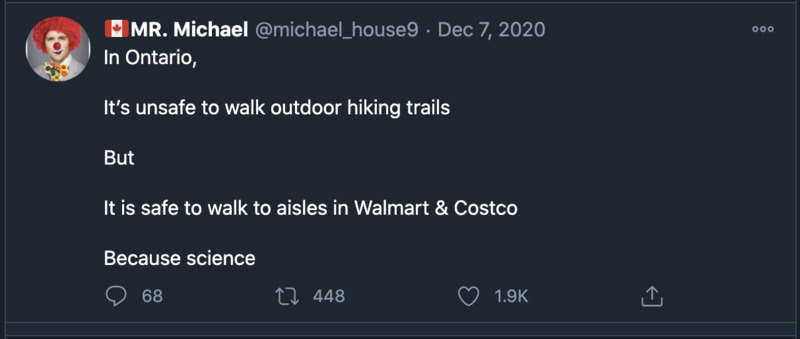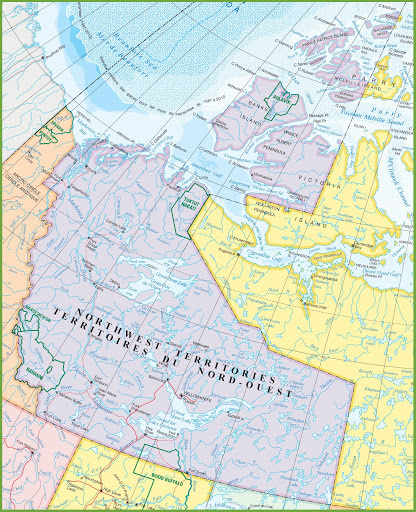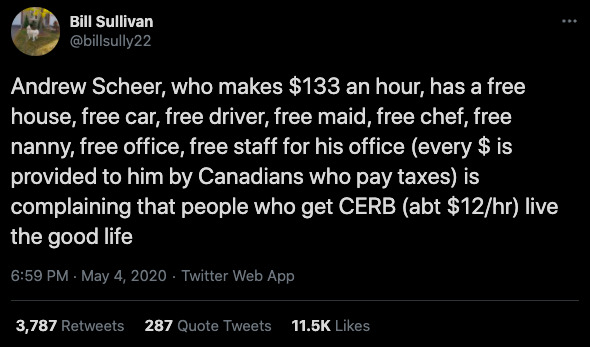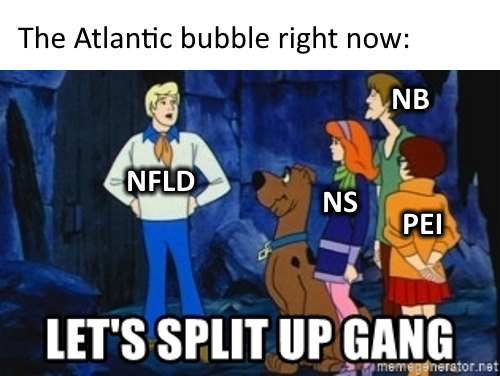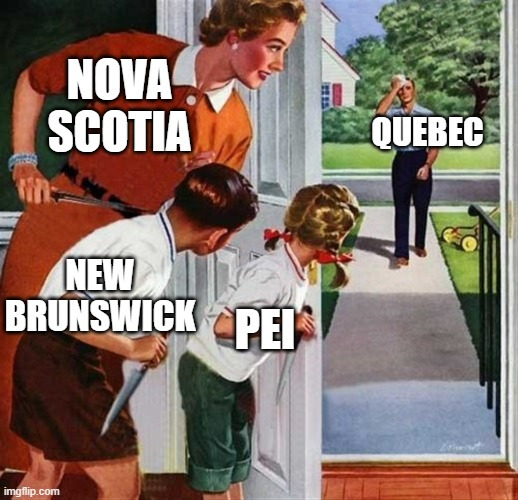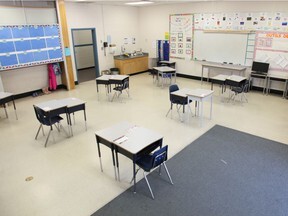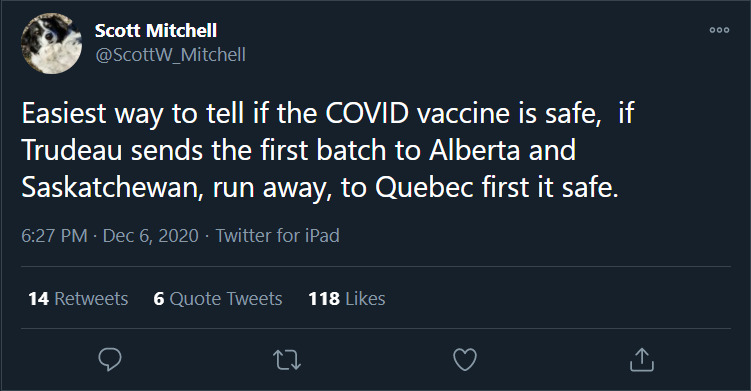Because Science: Public Reactions to Politics
Internet use rose during the pandemic, and so did political conversations between Canadians over social media. Canadians used social media to express both their support and grievances with government action or inaction towards the pandemic. Some Canadians took their reactions beyond social media and actively worked to fix government oversight.
North
Communities in northern Canada rallied together from far and wide to create new businesses to help those in need. They also conducted research, spread awareness, and gathered together, sometimes in protest, against the virus.
One resident of the Northwest Territories (N.W.T.) created a grocery-delivery business to help residents get cheaper groceries. Many residents of northern Canada struggle to afford necessary items, especially produce and other fresh items that are often shipped by long-haul trucks or planes. He drove 150 km to the Alberta border every week where food is more affordable and brought it home to community members in need.
In the Yukon, parents drafted a petition to close schools as COVID-19 cases rose because they believed the government wasn’t enforcing strict enough measures. They collected nearly 150 signatures to keep schools closed to protect students and immunocompromised parents.
Others responded to the crisis in northern Canada by creating resources to help remote Indigenous communities. A University of Alberta student created a map of travel restrictions and road closures throughout the territories as a way to document local responses to COVID-19.
Central
In May 2020, Andrew Scheer, leader of the Conservative Party of Canada, claimed that the Canada Emergency Response Benefit (CERB) and the Canada Emergency Student Benefit (CESB) deterred Canadians from returning to work and thus prevented the economy from stabilizing. Twitter users quickly rejected Scheer’s comments. The large number of retweets and likes on this tweet indicates how many Canadians disagreed with Scheer’s dispassionate statement.
Public reactions changed as information about the virus spread. In Quebec, local advocates lobbied the government to vaccinate those with developmental disabilities first. The campaign began after research showed that people with Down Sydrome are four times as likely to be hospitalized by the virus, and ten times more likely to die from it.
East
Atlantic Canadians viewed the Atlantic Bubble with apprehension. Composed of the four eastern provinces, the bubble permitted residents to travel throughout the region, but prohibited outsiders from entering. These memes highlight that inhabitants were pleased Quebecers were prohibited from travelling throughout Atlantic Canada because of rising cases in their province. In turn, Quebec residents that frequently visited New Brunswick (N.B.) created tension between N.B and the other Atlantic provinces because of similarly rising case numbers. The Atlantic Bubble was dissolved in December 2020 and travel was once again restricted between the Atlantic provinces due to the second wave of the pandemic.
West
Parents from Caulfield Elementary School in British Columbia called on Vancouver Coastal Health to release more in-depth data on the rate of infection and transmission of COVID-19 so that communities could make more informed choices about sending their children to in-person classes. The province wanted to protect the privacy of people that tested positive, and in its hesitancy only released data when it was absolutely necessary. Public health officials argued there weren't firm criteria to determine an outbreak and that the process differed by province. The absence of reliable, detailed information from provincial authorities and health officials led to a stronger belief in misinformation, making it more difficult to control the pandemic.
This tweet exemplified the lack of trust in Alberta and Saskatchewan regarding the federal government’s handling of the pandemic and the vaccine rollout. The user states that if the first batch of vaccines is sent to the western provinces then it proves that the vaccine is effective. As citizens of the prairie provinces believe that Ottawa’s commitment to protecting the oil sand workers and farmers would not be on the list of priorities.

